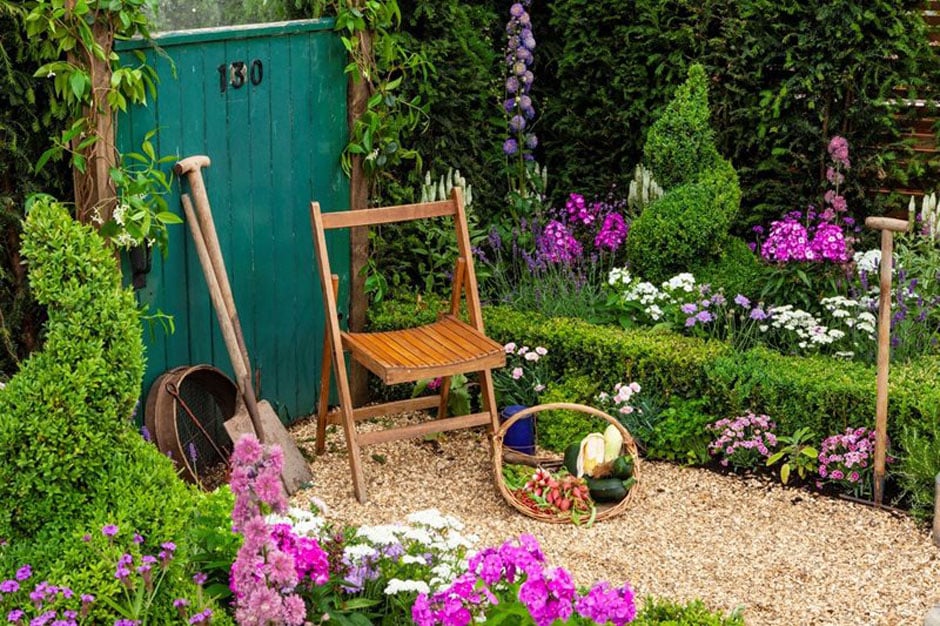Front gardens are some of our most valuable green spaces. They’re the face of our towns, cities and neighbourhoods, and any planting you do in your front garden will have a big impact. Seeing plants and greenery improves our mental health and wellbeing; keeping front gardens green rather than grey also offers protection from pollution and flooding as well as offering habitats for wildlife.
How can I fit a parking space into my garden?
If you want to park on your front garden, then there can still be room for plants. One of the best ways to do this is to pave just the tracks of where the car’s wheels will go, and fill the rest of the space with low-growing plants and gravel. There are a surprising number of plants that grow well in this situation, including many alpines and even some herbs such as creeping thymes. Small groundcover plants like bugle (Ajuga) make excellent choices too.
For parking more than one car, you may need more paving. However, there’s no need to pave the entire site – even with multiple cars, you won’t be parking or walking right into the corners or right to every edge anyway. Keep the paved area to the minimum that is practical and comfortable for everyday use.
Planting pockets
Even small areas left un-paved can be really valuable planting sites. These areas are important for a number of reasons. While placing a few potted plants might seem like an easy way to add a bit of greenery, plants in the ground are actually much easier to look after, as you won’t need to water or feed them nearly as often. Planted areas can also act as soakaways, allowing excess water to drain away during rainstorms.
Pave with good intentions
Surface water flooding can be a big problem in urban areas, especially where lots of people have paved over their front gardens. This is because when it rains, water that would formerly have seeped gently into the ground through lawns and flowerbeds rushes straight off paving or tarmac and into the drains, overwhelming them.
As a result of this, if you want to install more than 5 sqm of impermeable paving (such as asphalt), you need to apply for planning permission. Luckily there are lots of ways around this, including using permeable paving, resin-bonded gravel and concrete lawn bricks.
Make your house more ‘liveable’
Grow your own pollution protection with a hedge. Hedges trap particulate (dust) pollution – helping you breathe more easily at home. They’re also great for wildlife, and depending on their height, can also offer you some privacy too.
There are lots of small trees which are ideal for front gardens – many of them offer multi-season interest such as spring blossom and colourful autumn leaves. Trees will also offer shade, helping stop your house over-heating in summer.
Climbers are a great idea in front gardens, either over boundaries or house walls (or both). They take up very little room at ground level yet provide colourful flowers, wildlife habitat and even protect your house from summer heat and winter cold.
Keep it low maintenance
Working in your front garden is a great way to meet your neighbours and develop a sense of community. But often it’s a good idea to have a relatively low-maintenance front garden as you may be far from the shed, hosepipe, Can refer to either home-made garden compost or seed/potting compost: • Garden compost is a soil improver made from decomposed plant waste, usually in a compost bin or heap. It is added to soil to improve its fertility, structure and water-holding capacity. Seed or potting composts are used for growing seedlings or plants in containers - a wide range of commercially produced peat-free composts are available, made from a mix of various ingredients, such as loam, composted bark, coir and sand, although you can mix your own.


